Now given
theoretical theses on ranciditythat I described, you can highlight another feature of my recipe, which I omitted earlier, since the more the thesis contradicts the mainstream (generally accepted opinion), the more weighty the arguments should be.
Using cakeThe cake obtained by me during the extraction of linseed oil and oil from chia seeds, I
throw out... As simple as that.
Usually in industrial production in the cake after the first pressing (I do not go beyond this stage in my home "production") about 20% of oil remains in the cake. Then comes the second stage of pressing, which can mechanically extract a little more oil and we get a cake with about 10% oil, which only then can be extracted only by extraction: with various solvents, as a result of which we get an almost fat-free meal. In different conditions, the figures will be slightly different, but in general, with oil crops, the data is approximately the same.
Based on this, and the fact that in household oil presses, the conditions for pressing the oil are not very extreme (at home they do not really strive to obtain the maximum-high efficiency), I can assume that 15% -25% of oil remains in the flaxseed cake, which is quite a lot. But the cake already after the first stage undergoes significant transformations, being exposed to high pressure and temperature. In the recipe I described the temperature measurements: if the oil at the outlet of the oil press had a temperature of 34 ° C, then the cake was already 100 ° C. And this was after some effort on my part to reduce these temperatures. And so, the temperature of the cake at the outlet of 120 ° C is quite normal.
It so happened that a couple of times I managed (by accident) to get oil from flaxseed cake and, unlike the oil that flowed from the oil press, it was already both a little bitter itself and had a quite pronounced bitter aftertaste: of course not as strong as in purchased oil, but quite noticeable.
If anyone is interested in how to accidentally squeeze oil from the cake
Initially, the cake comes out through the conical slot between the auger and the squeezing basket:
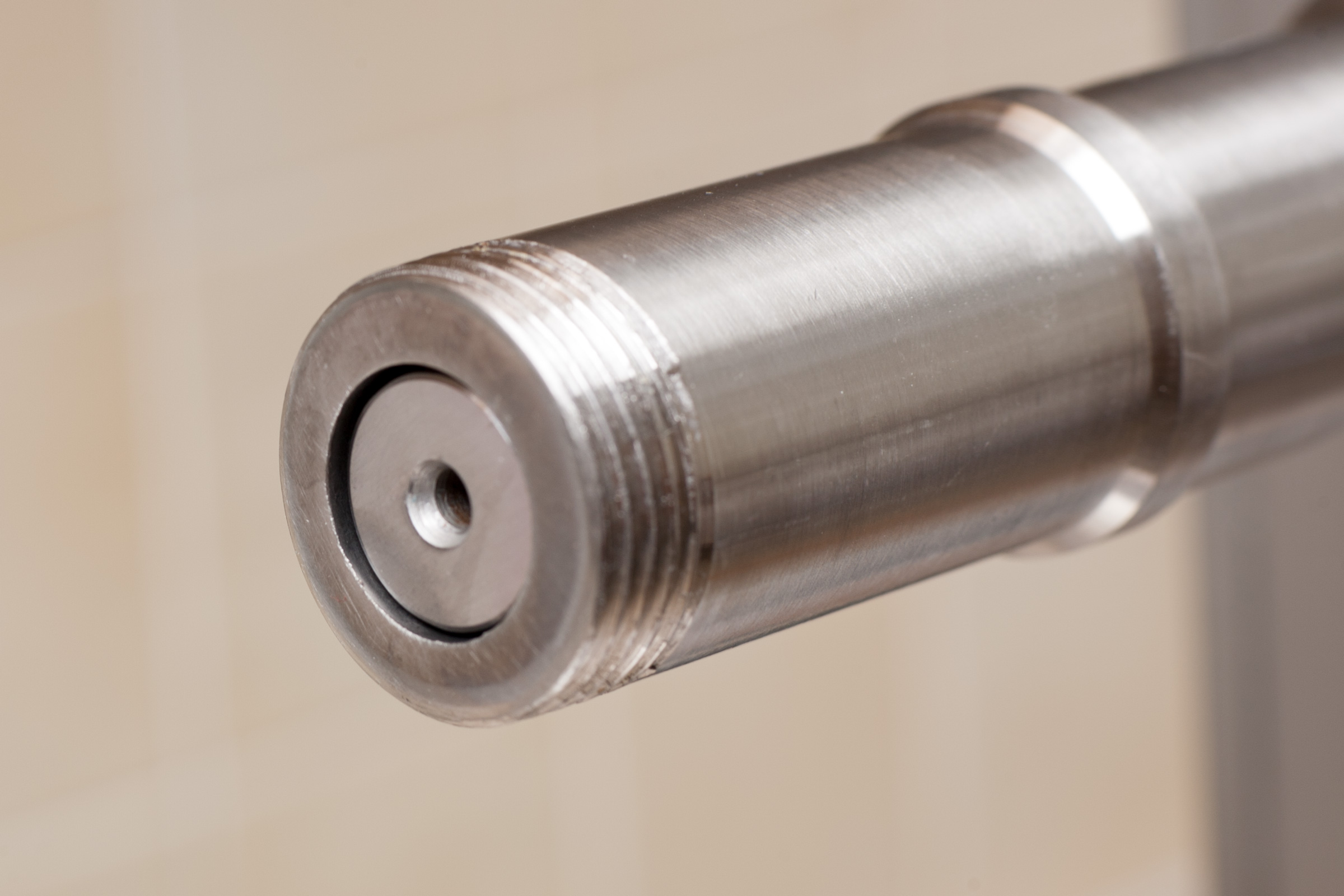
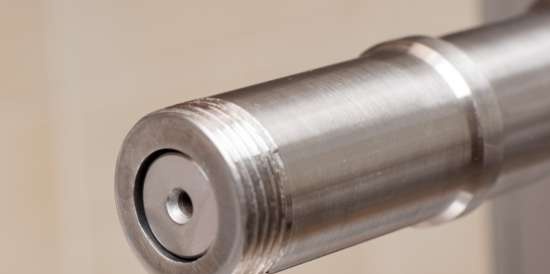
The cake comes out through a round target, but sometimes it scatters in different directions, plus everything, sometimes the drops of heated oil "explode", I scatter the cake and small drops of oil (aerosol) over a rather long distance. The oil press came with a small corner cap, but it did not help much here. As a result, I decided to make an extension cord that would solve these problems. The first option was a piece of stainless steel corrugation, which is used in plumbing / heating, which I screwed on with a clamp. It can be seen from the top right:
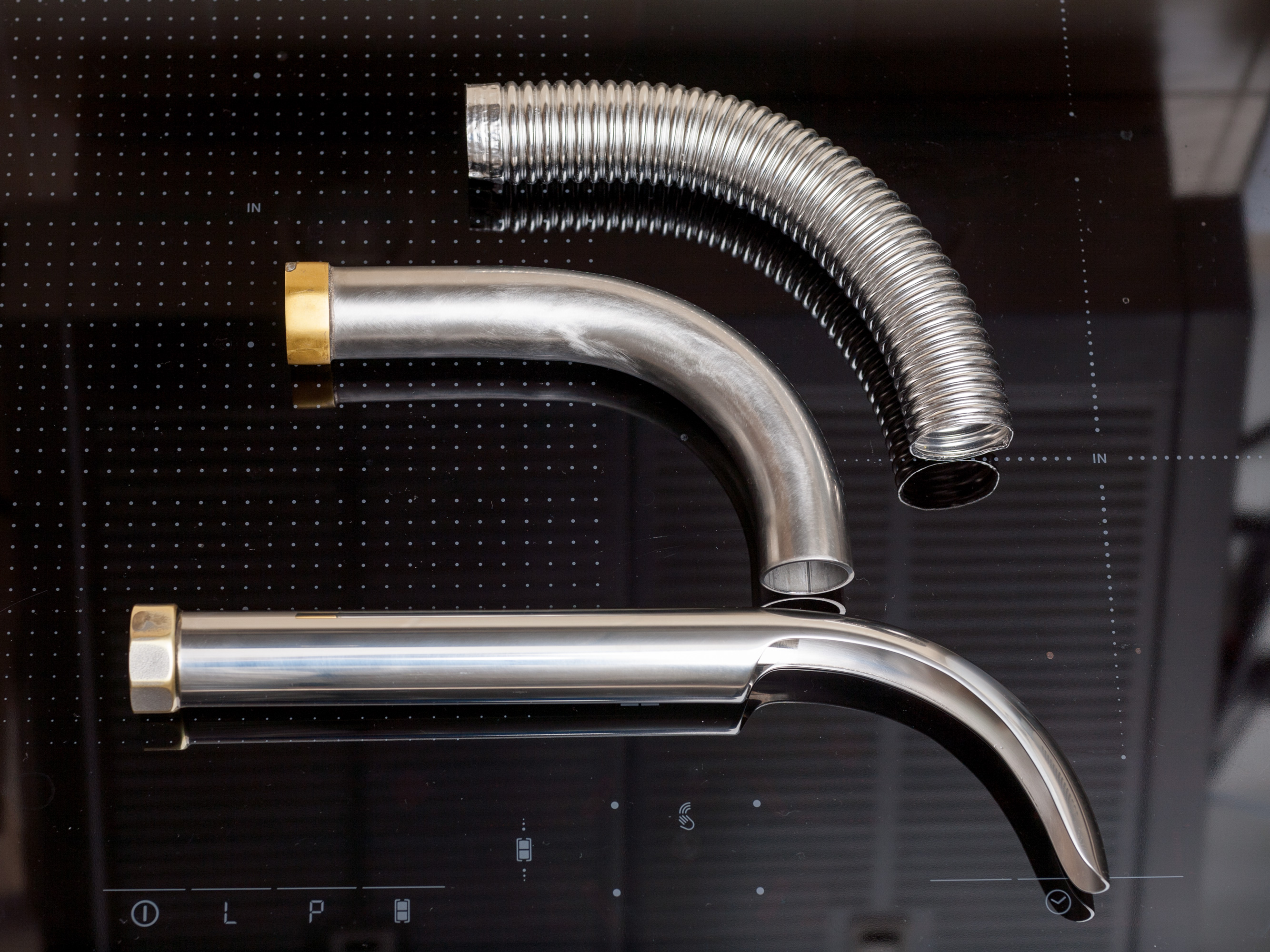

In general, the solution turned out to be very effective: the cake and oil aerosol stopped splashing and scattering around, I managed to move the cake outlet a little further from the place where the oil flows (you can use a larger dish for oil), the cake even began to thicken a little. But one drawback was identified: it is rather difficult to clean / wash the stainless steel corrugation inside from the product residues. And if this is not done, that the cake particles can go rancid and spoil the cake, which I will receive in the future. And since I was planning to use the cake, I decided to do the same, but with a smooth inner surface.
Therefore, the second version was a piece of stainless steel, which I cut off from the heated towel rail, which was bought in Leroy Merlin.I sawed off a corner piece of a heated towel rail (in the previous photo in the middle), my wife and I miraculously managed to cut an inch pipe thread on the squeezing basket (it was quite hard, I do not have a stainless steel die, so we used the usual one for steel pipes, my wife used a meter lever , and I held this structure with large adjustable pliers Knipex 86 03 400: as a result, we bent a 3/4 meter galvanized pipe). It didn't work at all on the heated towel rail pipe, so I soldered a 3/4 nut from the "American" to it. And then he polished all this stuff for a while. After washing in the dishwasher, the brass of the American woman darkened noticeably and acquired a "golden" hue
The second version was smooth inside, but practical tests revealed one peculiarity that was not obvious to me: everything was fine, except that in the turn, despite the fact that it was quite smooth and smooth inside, the compacted hot cake was compacted even more strongly and in fact got a little stuck. During experiments with the second version, I began to be able to squeeze out oil from the already squeezed cake, which dripped through the threaded connection: the oil was clean, without any particles at all, but already bitter with a very noticeable bitter aftertaste. To my surprise (cake temperature 120 ° C-140 ° C), it was not as bitter as the best commercially available flaxseed oil, but it tasted very different from the oil that was obtained from the oil press itself.
The problem turned out to be that, despite the fact that the inner walls of the pipe are quite smooth, they still create a noticeable resistance for the hot cake that came out of the oil press, and then there is a smooth turn, approaching which the cake was already compressed to a "stone" state and it is already very difficult for him to change his shape. As a result, I decided to make a third version, which would have the smoothest straight section, and the corner section had no bottom wall (the lowest one in the photo). In addition, according to the results of the operation of the previous options, I decided to lengthen the entire structure a little, for the convenience of using a large capacity for cake. The inner surface, as long as the skill and the tool were enough, was polished:
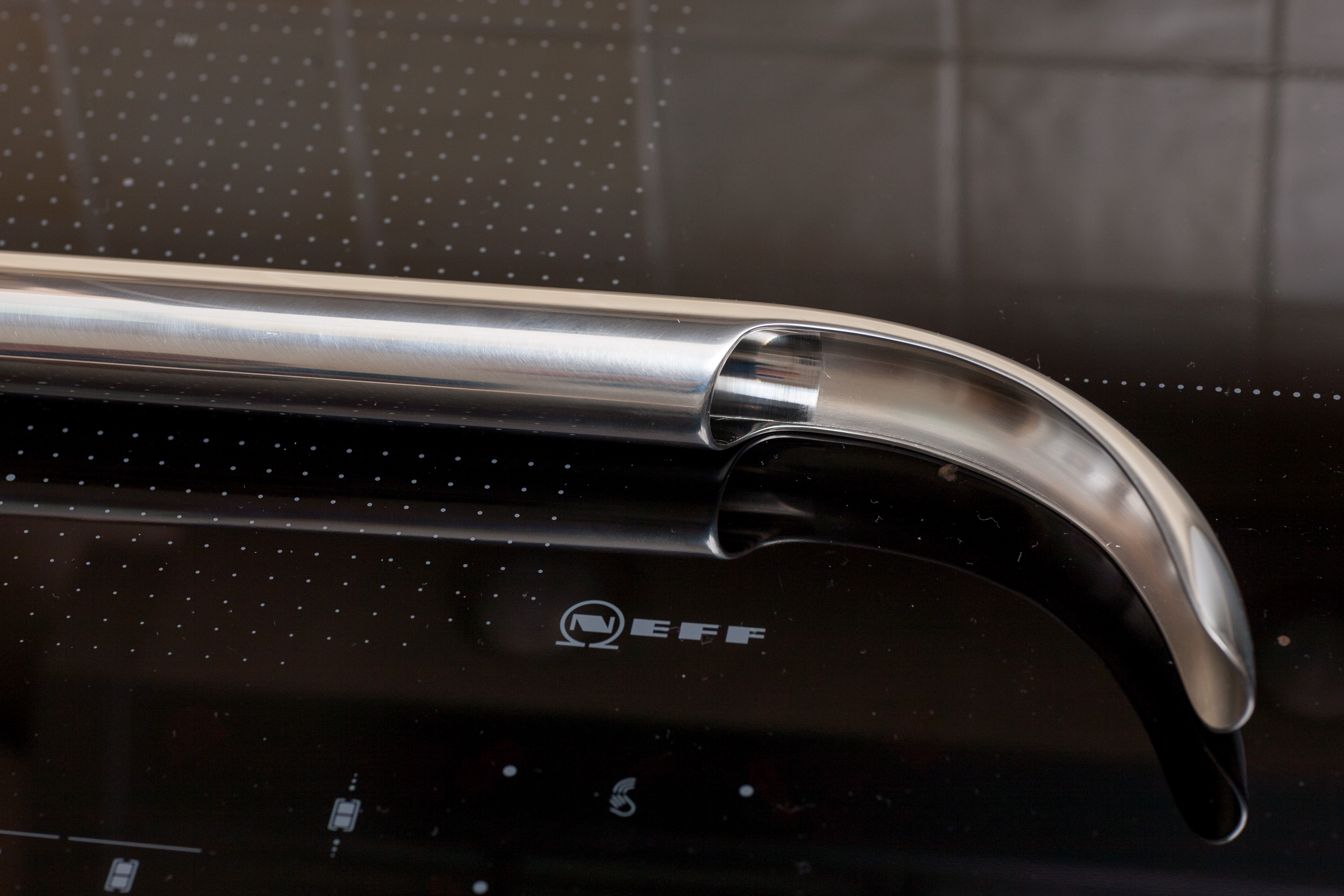

I like this option and I use it now. Type of the assembled oil press:
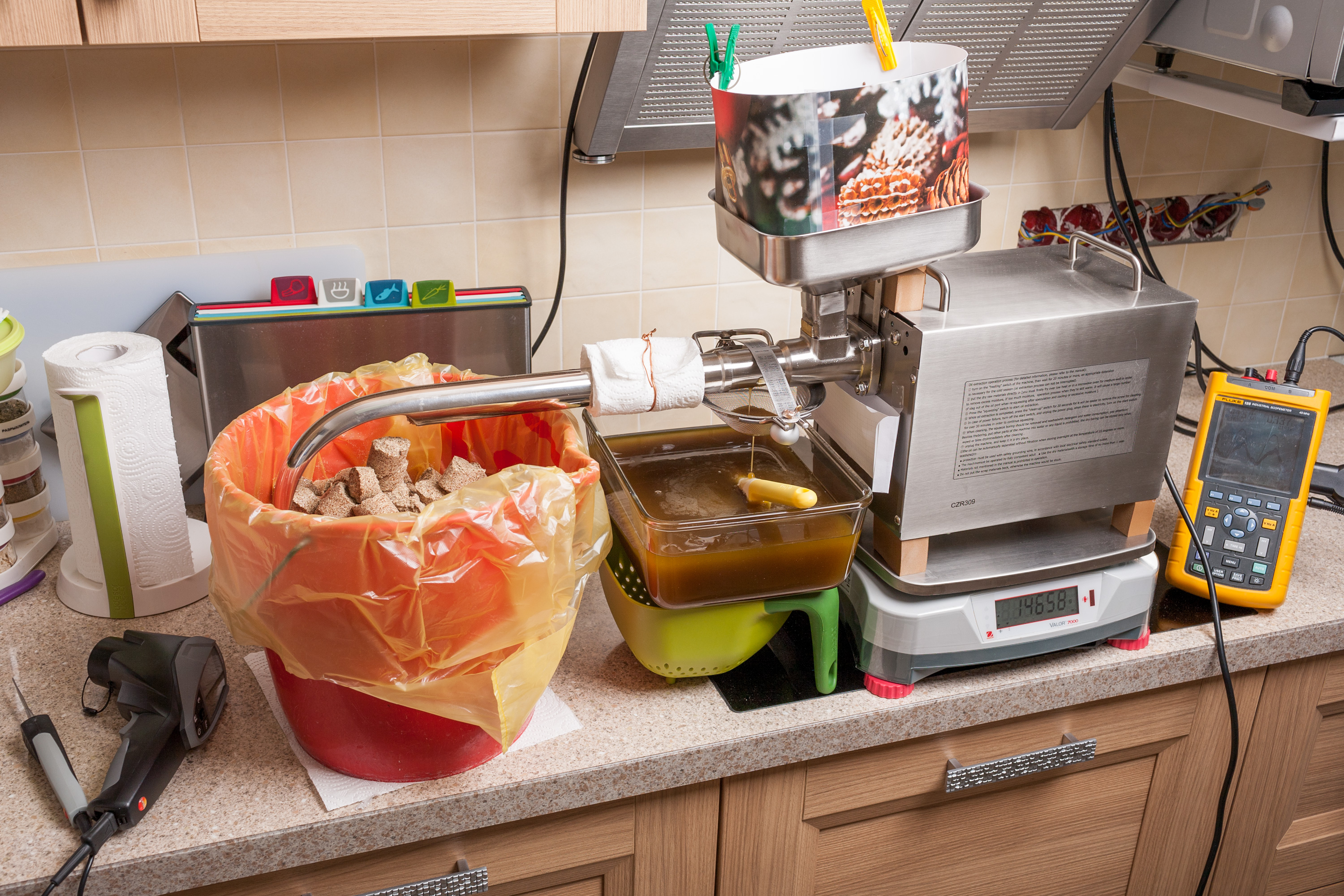

As a result of this whole story, I now know that the oil, which remained in a noticeable amount in the flaxseed cake, is already noticeably rancid (the bitter taste is given by the secondary products of fat peroxidation), as a result of which, I somehow do not want to use this cake for food ...
Yes, I understand the desire to use everything that we get in the process of pressing oil, including cake, as described in most recipes for using both a home oil press and for doing business in which cake / oil cake is quite valuable and important product. But I make oil at home in order to get high quality oil (the kind that I cannot buy in stores), as a result of which I do not consider it advisable to use flax and chia cake, since in a screw press they undergo very serious changes, in the form of denaturation proteins and oil rancidity due to high temperature and pressure.
For any reason, you think that you should consume not only oil, but also the rest of the parts that are in flax and chia seeds (personally, at this point in time, I do not consider this product appropriate for my diet, but this is just my opinion ) like lignans, protein, fiber, etc.?
No problem. Whole flax and chia seeds have a rather dense shell and will pass through the human gastrointestinal tract (such as apple seeds), so they need to be crushed in any "gentle" way available to you: in a blender, in a coffee grinder, in
melangere, in a mortar with a pestle, etc. It is only important not to overheat the flax and chia seeds during the destruction of their shell.For example, on a melanger, I got the following consistency (in the photo, the result of a melanger on 100% flax, without any additives):
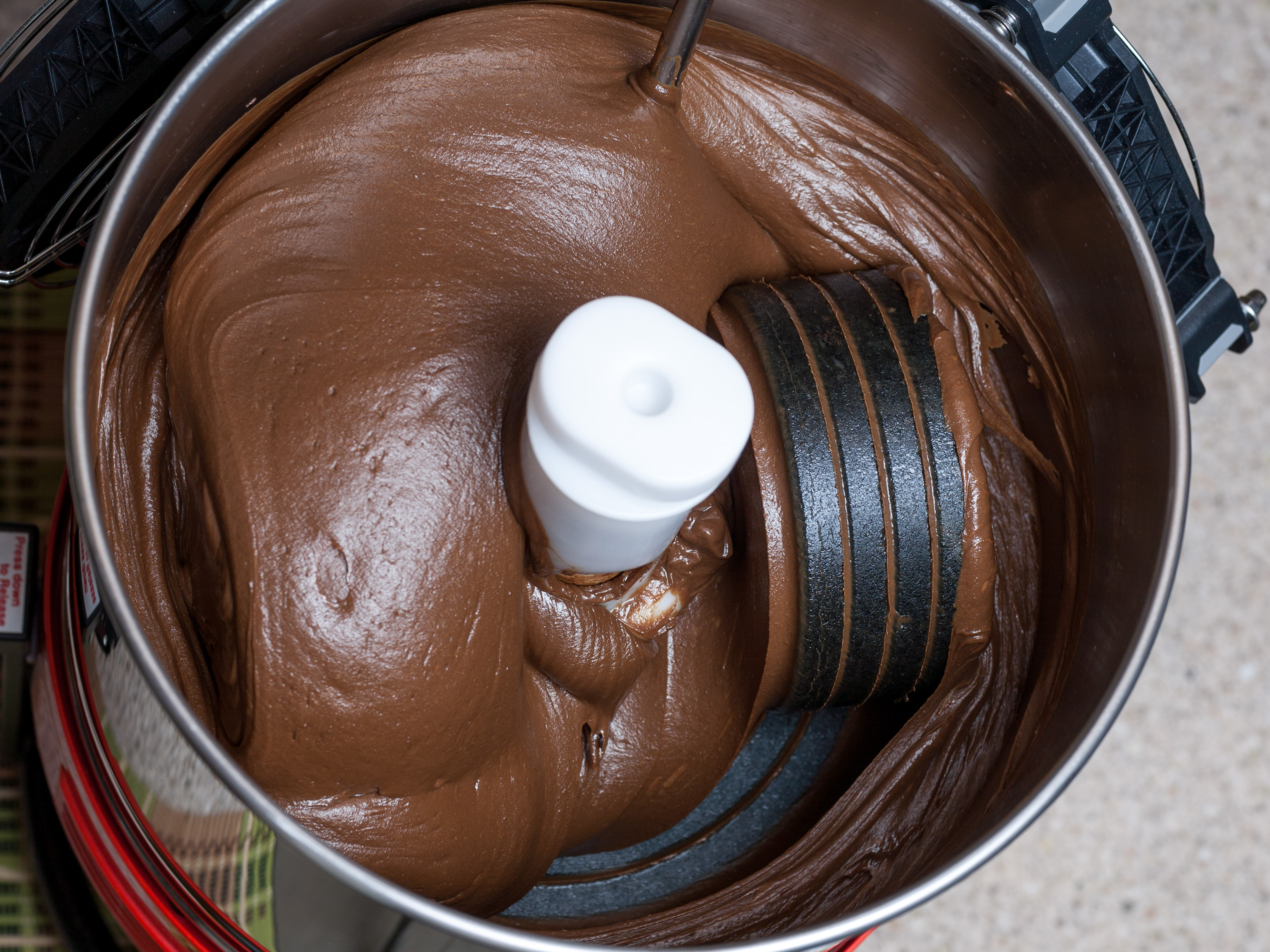

PS: Please note that this post applies only to flax and chia seeds, and not in general to the whole cake, which can be obtained on a screw oil press. For example, cocoa cake obtained as a result of pressing cocoa butter has quite adequate properties, since it does not have such a detrimental effect on temperature and pressure as on flax and chia seeds (since cocoa butter has a different fatty acid composition and composition of "built-in" antioxidants).
PSPS: I thought for a long time, but still decided to bring a standard that describes the terms used during the production of oil: GOST 21314-75 Vegetable oils. Production. Terms and Definitions.
🔗







